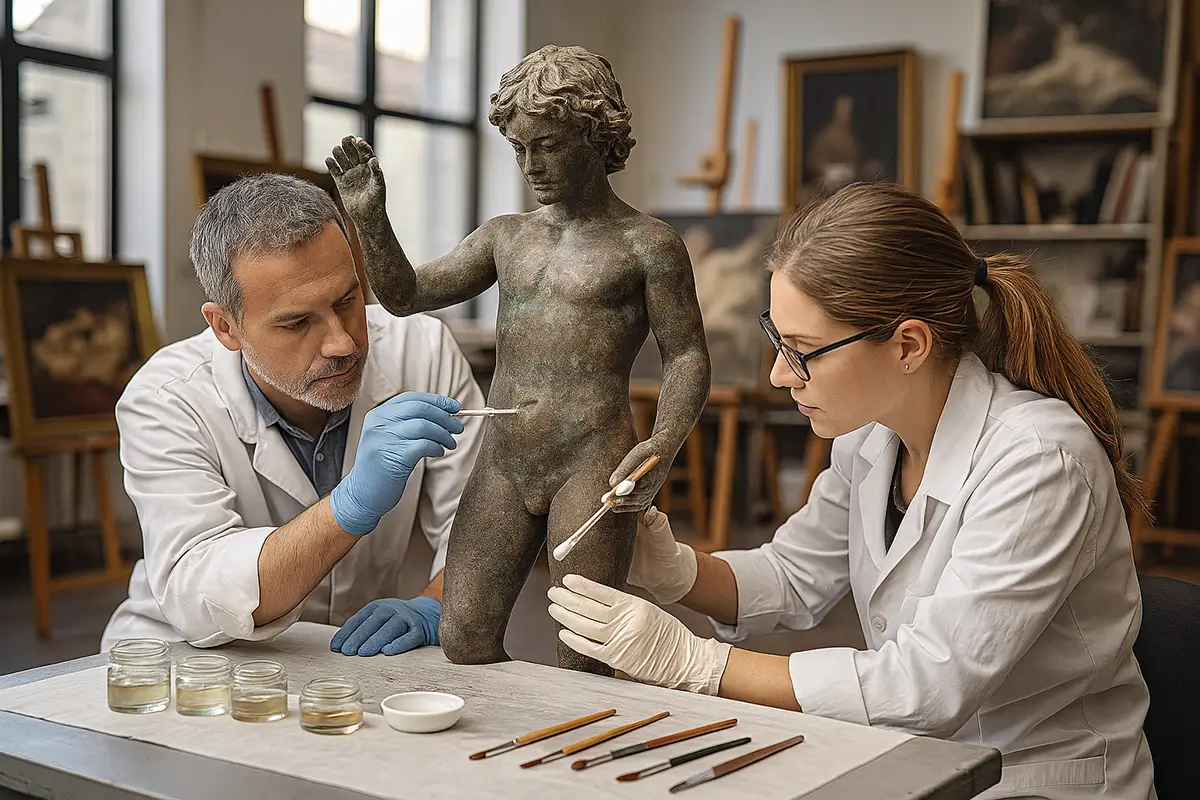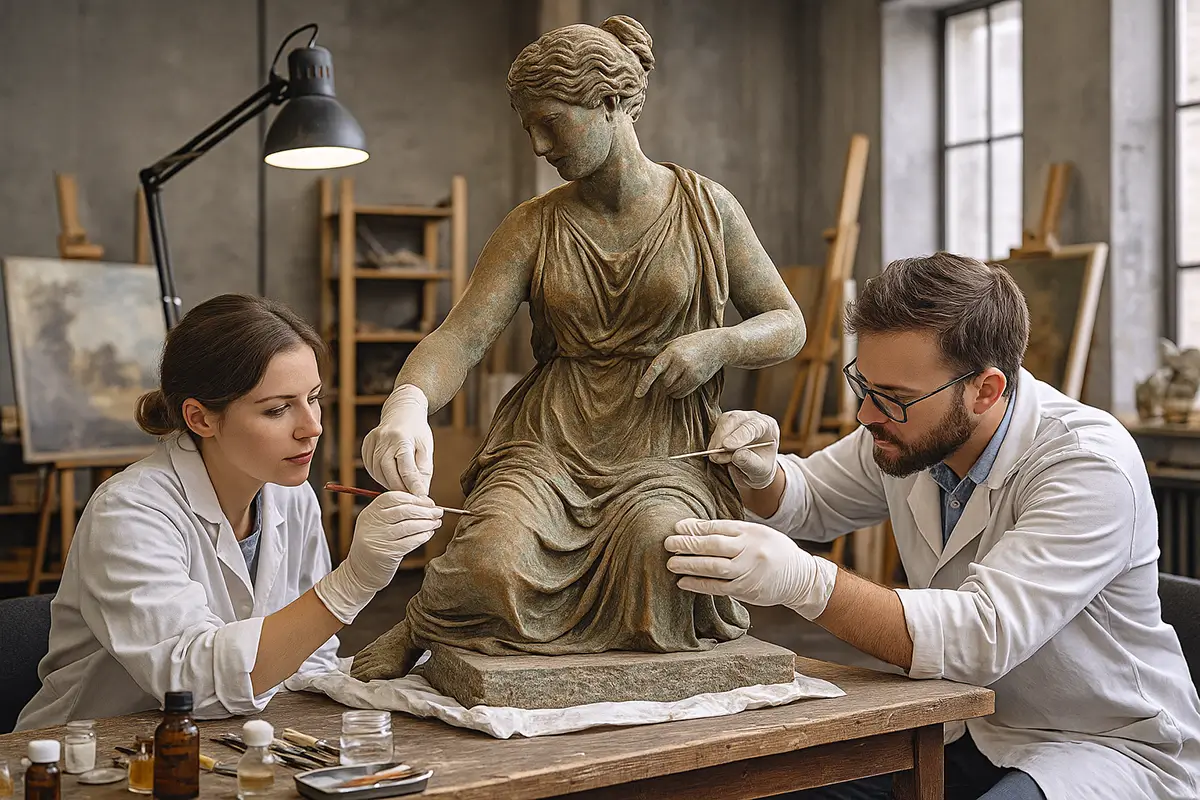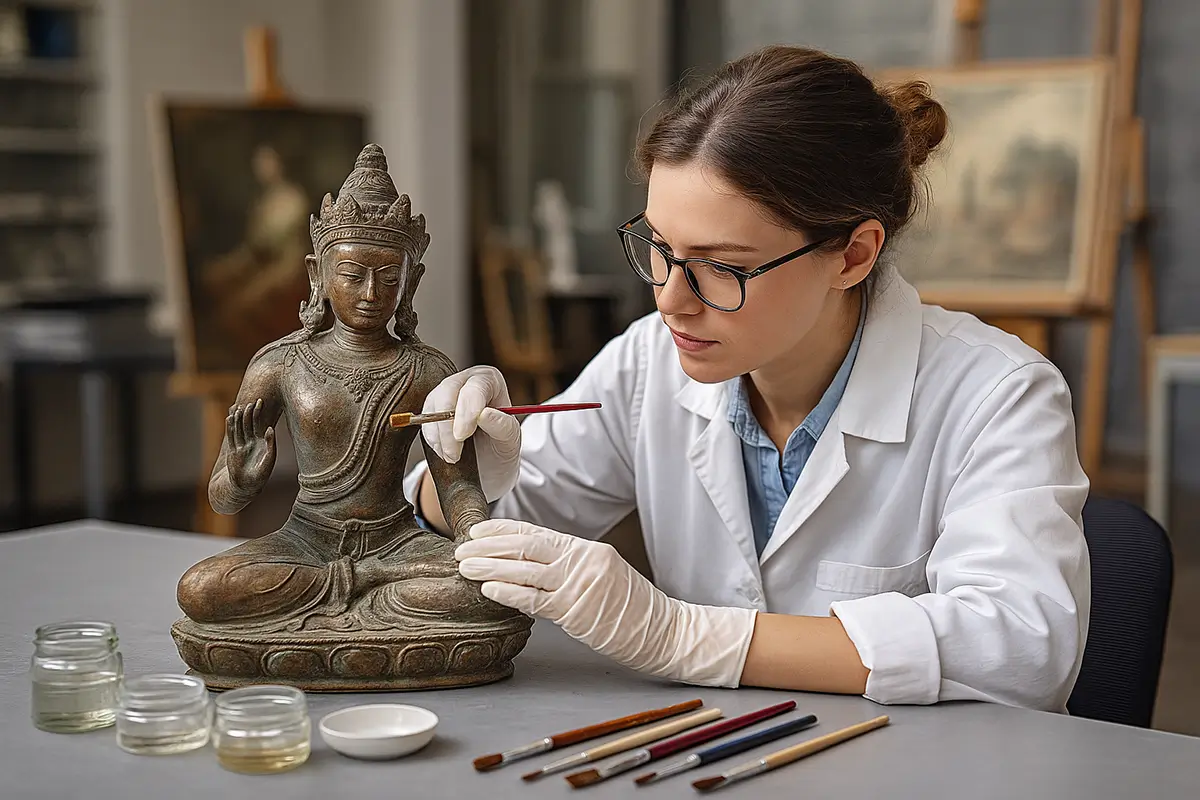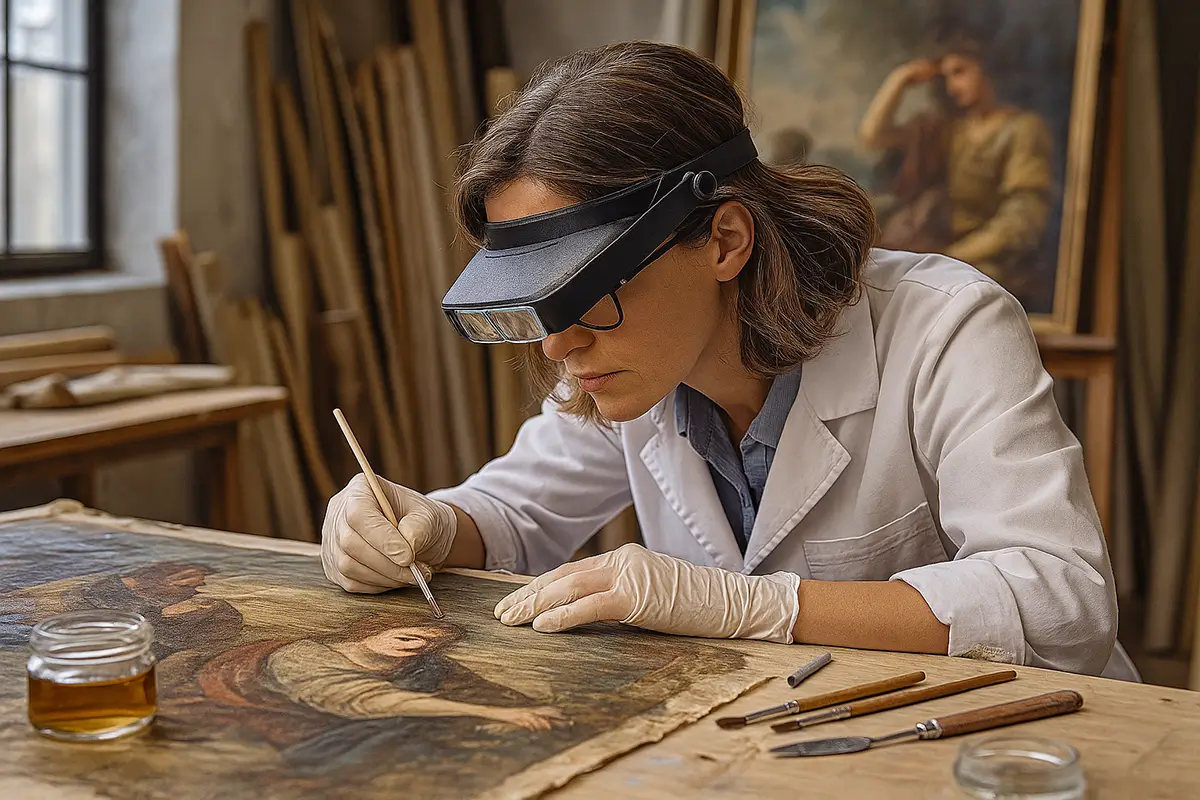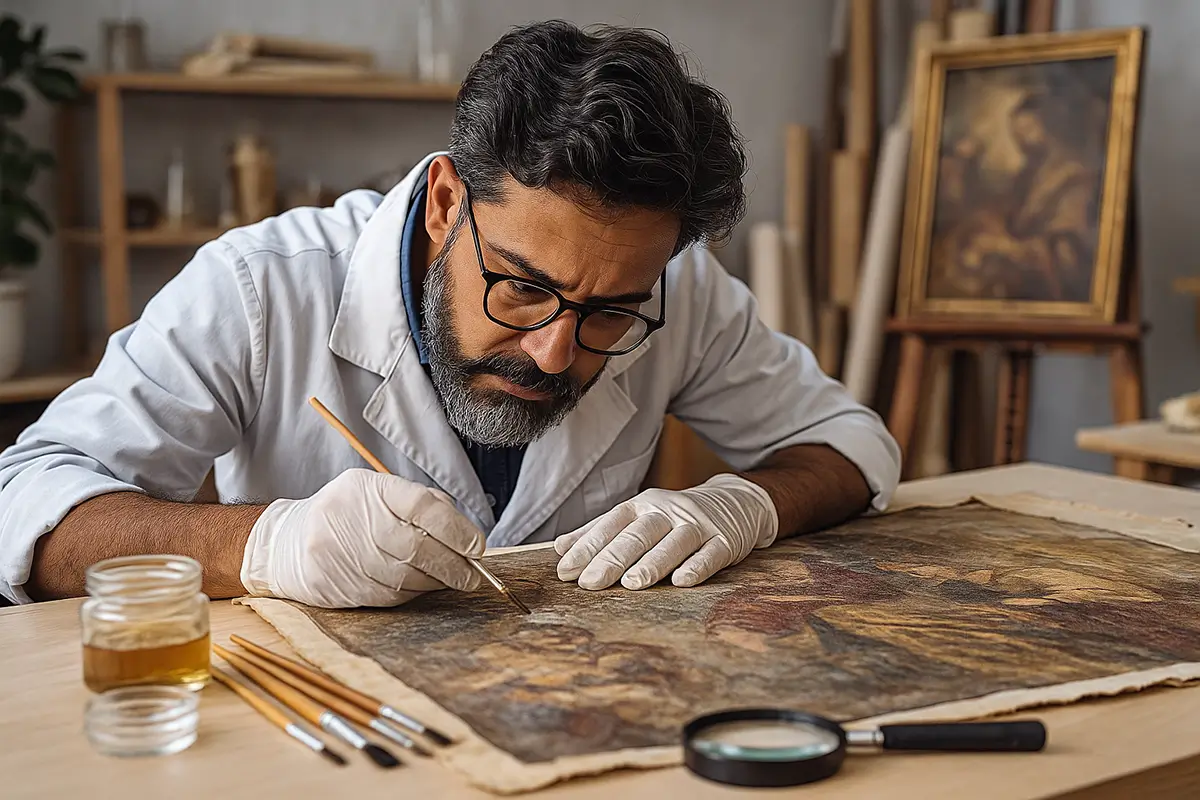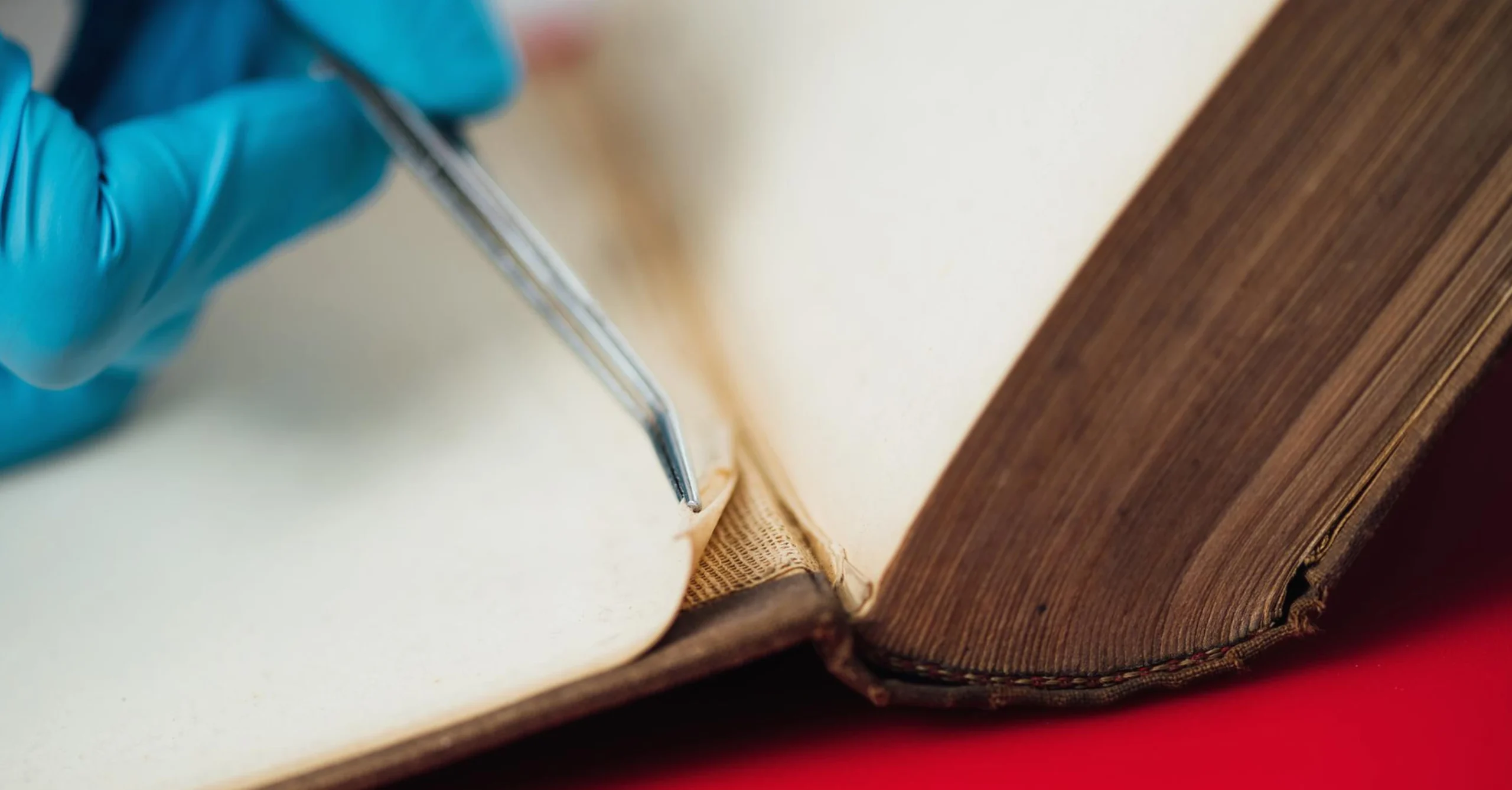Introduction: Where science meets culture
Walk into a museum and see a centuries-old painting glowing with vivid colour, or a sculpture with no visible cracks, and chances are you are looking at the results of art restoration. Restoration bridges the gap between the past and the present, allowing viewers to experience artworks as their creators intended.
But restoration is not simply “repainting” or “repairing.” It is a scientific discipline that balances tradition with innovation. It involves chemistry, physics, history, and ethics—ensuring that interventions are minimal, reversible, and respectful of authenticity.
In India, where the heritage spans millennia and contemporary art pushes material boundaries, art restoration requires both ancient craft knowledge and modern technology. This blog explores how restoration works, the science behind it, and how it is evolving in India.
What is art restoration?
Art restoration refers to treatments that return an artwork closer to its original appearance after deterioration, damage, or alteration.
- Conservation focuses on preventing future damage.
- Restoration focuses on repairing or stabilising past damage.
Both are complementary: conservation ensures survival, restoration ensures visibility.
Why restoration matters
- Aesthetic renewal: Brings faded, damaged works back to life.
- Cultural continuity: Keeps heritage relevant for future generations.
- Market value: Well-restored works retain or even increase financial worth.
- Institutional reputation: Museums and galleries gain credibility through well-maintained collections.
The science behind art restoration
1. Chemistry of materials
- Pigments react differently to light, humidity, and solvents.
- Restorers study chemical properties before applying any cleaning agent.
- Example: Removing varnish requires solvents that dissolve the varnish but not the underlying paint.
2. Physics of structures
- Wooden panels expand/contract with humidity.
- Canvas fibres stretch and weaken with time.
- Structural reinforcements must align with the physical properties of the material.
3. Biology of decay
- Fungus and insects attack paper, textiles, and organic binders.
- Biological treatments neutralise these risks before restoring surfaces.
4. Imaging and diagnostics
- Infrared reflectography reveals underdrawings.
- X-rays show hidden cracks or earlier restorations.
- UV light highlights overpainting or retouches.
Restoration is guided by non-invasive diagnostics before any physical work begins.
Traditional methods of restoration
India has a long history of artisanal repair traditions. Some practices include:
- Lep technique for manuscripts: Natural adhesives made from tamarind seed or wheat starch.
- Lime plaster fills for damaged wall paintings in temples.
- Hand weaving repairs for textiles.
- Natural resins and varnishes for paintings and sculptures.
These methods, passed down through guilds and families, are still valuable today when applied under professional supervision.
Modern technologies in restoration
While traditional methods remain important, modern science has transformed restoration:
1. Laser cleaning
- Removes surface dirt or accretions without touching the paint.
- Common for stone sculptures and frescoes.
2. Nanotechnology
- Nano-materials create consolidants that penetrate deeply without altering surfaces.
3. 3D scanning and printing
- Used to reconstruct missing fragments of sculptures or architectural details.
4. Digital restoration
- Creates digital models of artworks, simulating potential restoration outcomes before interventions.
5. Microclimate enclosures
- Encasing fragile works in controlled environments to stabilise before or after restoration.
Restoration workflow
- Condition assessment – Document damage, previous repairs, and materials.
- Scientific analysis – Imaging, spectroscopy, chemical tests.
- Treatment plan – Designed to be minimal and reversible.
- Execution – Cleaning, stabilisation, retouching, structural repairs.
- Documentation – Photographic and written records.
- Preventive follow-up – Recommendations for storage and display.
Common restoration projects in India
- Miniature paintings – Cleaning of soot, stabilising fragile pigments.
- Murals and frescoes – Repairing temple wall paintings affected by monsoon leaks.
- Sculptures – Removing salt deposits and restoring chipped areas.
- Contemporary art – Repairing synthetic or mixed media works that degrade unexpectedly.
- Photographs – Digitising and repairing faded or silvered prints.
Case examples
Case 1: Miniature paintings in Rajasthan
A palace collection of miniatures had darkened under soot and varnish. Using solvent gels and micro-sponges, restorers removed accretions without disturbing original pigments, reviving their vibrancy.
Case 2: Bronze sculpture in Tamil Nadu
Corrosion threatened a Chola-period bronze. Controlled electrolytic reduction stabilised the metal, while protective coatings prevented further damage.
Case 3: Contemporary installation in Mumbai
An installation using plastics and adhesives began disintegrating. Scientific tests identified stable substitute materials for discreet reinforcement.
Ethical considerations
Restoration is not about making old art look new—it is about respecting authenticity.
- Minimal intervention: Only repair what is necessary.
- Reversibility: Future conservators should be able to undo treatments.
- Honesty: Retouches should be distinguishable under close examination.
- Documentation: Every action must be recorded for transparency.
Ignoring these principles risks altering history itself.
The role of institutions and corporates
- Museums: Must integrate restoration into their cultural stewardship mandate.
- Corporates: With growing collections, need structured conservation-restoration programs.
- Private collectors: Should view restoration as investment protection.
Professional Art Conservation Services provide expertise across all these contexts.
Best practices for commissioning restoration
- Always begin with diagnostics. Don’t rush into cleaning.
- Hire trained professionals, not general repair workers.
- Combine traditional and modern methods where appropriate.
- Maintain transparency—ask for treatment reports.
- Plan preventive measures post-restoration to avoid repeat damage.
Future of art restoration in India
- Expansion of conservation labs in major cities.
- Collaboration between scientists and traditional artisans.
- Greater use of AI for predictive degradation analysis.
- Digital twins of artworks for heritage preservation.
India is poised to blend its rich artisanal traditions with cutting-edge technologies, creating a uniquely hybrid restoration ecosystem.
Conclusion: Science in service of culture
Art restoration is where science and culture converge. It combines chemistry, imaging, nanotechnology, and digital tools with centuries-old traditions of craftsmanship. The result is not just a repaired artwork, but a cultural legacy preserved.
For India’s collectors, corporates, and institutions, investing in restoration means ensuring that artworks remain vibrant, credible, and valuable—culturally and financially.
Explore our Art Conservation Services. At TurmericEarth, we integrate science and tradition to restore artworks with precision, ethics, and respect—ensuring every piece tells its story for generations to come.



